THAT’S BECAUSE HE’S RANDY OLD’S FATHER, BRUCE S. OLD, A METALS SCIENTIST WHO CONTRIBUTED TO THE MANHATTAN PROJECT, HELPED FOUND THE OFFICE OF NAVAL RESEARCH AND ADVISED SEVERAL U.S. PRESIDENTS.
Not to mention Bruce Old wrote four best selling books on tennis “tactics” and was a formidable force at the Concord Country Club in Concord, MA where he won 15 titles in singles, 11 in men’s doubles and 12 in mixed doubles over a 20-year period.
Bruce S. Old is pictured above with Grand Slam Doubles Champion William F. Talbert.
People like to read about people. And we stumbled on Bruce Old when we interviewed Jim Wilson, The Treasure Coast’s Johnny Appleseed, as we called him in a related article.
When we asked Randy Old if we could write about his father he said he had “mixed feelings.”
“My father was/is a close friend and hero to me, and I sort of like to have people know about him, but I am also very protective of him; he is my father; he is not a thing to use to enhance my political stature…he gives me personal pride and strength by having him as a father, not by telling everyone about him.”
So he said it was OK to take a stab at it but “want it understood that this was your (my) idea, and has nothing to do we me trying to gain political recognition.”
So here we go.
Bruce Old graduated from the University of North Carolina in 1935 and received his doctorate degree in metallurgy from MIT in 1938.
Metallurgy is concerned with the production of metallic components for use in consumer or engineering products.
Then after receiving his Doctorate he began working on a research project at Bethlehem Steel in Bethlehem, PA. There he was called into active duty in the Navy in August 1941, several months before the United States entered World War II.
Now to his marvelous and extensive list of life-long accomplishments.
To begin with, after entering the Navy he was ordered to the office of the Secretary of Navy in a special office called the Office of the Coordinator of Research and Development, which was going to have a major effect on the outcome of the War.
Among the activities that he got involved in was work on nuclear energy, which of course was extremely secretive at that time.
General Leslie Groves, who ran the so called Manhattan District Project, which was the development of the atomic bomb, organized a group of four scientists to go to Italy on a first scientist intelligence mission that was ever organized.
Dr. Old was one of the four scientists.
Manhattan Project Emblem
The Manhattan Project was a research and development project that produced the first nuclear weapons during World War II.
General Groves was worried whether Nazi Germany was developing nuclear bombs, and he thought there was a race between the two nations and that we better find out about the status of the German development.
Groves figured that if the Germans were developing a bomb they would draft Italian physicists and send them to Germany to work on the project.
After considerable research in Italy, the scientists concluded, that in their opinion the Germans were not developing the atomic bomb. They went back to the United States about March of 1944 and reported their opinion to General Groves.
Groves reported to Roosevelt, Roosevelt therefore told Secretary of War Stimson and General Marshall, who was Chief of Staff what their report stated and that the Germans were not developing the bomb.
Being a Naval junior reserve officer, Dr. Old believed that if the Navy was going to be a first rate Navy after the war, its research activities needed to be reorganized. He recruited a group of officers and wrote an outline of how the research ought to be organized.
After the secretaries office in the Navy Department did not accept their recommendation, they persisted and wrote a bill and sent it to the Senate of the United States establishing an office called the Office of the Naval Research.
They wrote a long report to President Roosevelt outlining how the navy should be organized.
However, Admiral Ernest King, Chief of Naval Operations and a Member of the Joint Chiefs of Staff, again opposed the recommendation.
But in the end, President Roosevelt wrote to Admiral King, “Dear Ernie, I made you Commander and Chief to fight the war, underlined three times, not to reorganize the navy department.” FDR was apparently going to run the show.
Indeed in August 1946, just after the war was over, the House and Senate passed the bill establishing the Office of Naval Research.
After the war was over Dr. Old moved from Washington to Concord, MA where he went to work for Arthur D. Little in Cambridge; being intrigued with the work they were doing on national defense.
Arthur D. Little was founded in 1909 by Arthur Dehon Little, an MIT chemist who had discovered acetate.
Arthur D, Little
With five children, and as a scientist, Dr. Old became interested in what his children were getting in the way of science courses. With his keen interest and previous connections in Washington, he was made a member of President Eisenhower’s Science Advisory Committee. One of the things that Committee was interested in was science education.
He was so interested in education that he realized Concord’s neighboring town, Carlisle, had very poor high school facilities and the Concord High School was growing out of proportion.
So Dr. Old and others dreamed up having a Concord-Carlisle District School Committee, which meant building an adequate high school. He spent time on the site selection committee to select a site for the high school and worked through the towns on getting the two towns, Concord and Carlisle, to accept the regional school concept. The budget for the joint high school was by far the biggest sum of money on any single project Concord and Carlisle had ever been involved in.
Concord-Carlisle High School
The work he was doing at Arthur D. Little took an interesting turn when Jim Fisk, who was one of the four scientists that went on the scouting mission to Italy to see if Germany was building a nuclear bomb, became the director of research in the U.S. Atomic Energy Commission (USAEC), about 1947.
Dr. Old was recruited by Jim Fisk to be the head of the materials section of USAEC’s research department. Although he had just started work with Arthur D. Little and had some important assignments there, he reached an understanding whereby he could spend half his time in Washington as the head of the materials division of the Department of Research.
There had a very large budget to do the material development to permit what the Commission hoped to be an age of building nuclear power plants around the United States.
Metals turned out to be one of the most difficult technical problems that the age of nuclear energy faced.
USAEC had government laboratories like Oakridge, Los Almos, and Argonne and Hanford National Laboratories where materials research was underway.
But it also had an extensive series of contracts set up with universities such as MIT and University of California, Stanford, Columbia etc. Dr. Old approved of all the various budgets which gave him an overall understanding of what was going on.
A few years later MIT decided that their nuclear laboratory should be set up as a separate function. The Atomic Energy Commission agreed with them and shifted the transfer of the metallurgical lab to an industrial company.
Given his relationship with Arthur D. Little, Dr. Old, Jim Fisk and others formed a company called Nuclear Metals Inc., which was able to utilize the Arthur D. Little’s laboratory facilities for industrial work as well as for work for the Atomic Energy Commission.
Dr. Old was President of Nuclear Metals from 1954 through 1957, while continuing his association with Arthur D. Little.
But after finding Arthur D. Little’s laboratory facilities inadequate he wanted to build a new laboratory sufficient for the company to grow and prosper.
Since he had been involved in the school committee in Concord, he recognized that Concord needed an increase in its tax base, and thought Nuclear Metals would be the type of company that would bring citizens to the town of the type that we would welcome, mostly professional staff.
After finding a site the ground breaking took place in September of 1958 and the actual dedication was on October 24, 1958 and a young Massachusetts senator, John F. Kennedy, came out to dedicate the laboratory and make the opening speech.
Nuclear Metals Dedication. Left to right H. Hugh Willis, President, Nuclear Metals, who succeeded Dr. Old in 1958, Senator John F. Kennedy, Harold C. Smith, Chairman Concord Board of Selectman; and Harold S. Vance, U.S. Atomic Energy Commission.
At that time everything nuclear had a magic aura until later in life when people began to fight nuclear activity. He regretted that it never reached its potential for power the way it seemed following World War II, but believed it still would someday.
Back then total investment in nuclear laboratories was on the order of $500 million a year. According to the Christian Science Monitor (March 5, 2015) U.S. funding for energy research development and demonstration is about $ 5 billion, of which around $1 billion is set aside for nuclear and fusion energy research.
He believed that all of the government agencies that worked together toward accomplishing the atomic bomb and the results of the Manhattan project were “the trump card of peace. I still feel that you can credit the existence of a nuclear arsenal with preserving the peace from World War II until today.”
Now to perhaps a more fascinating story.
In his spare time, while continuing his work with Arthur D. Little and Nuclear Metals, and after finding out there had never been a book written on tennis doubles, Dr. Old became a doubles tennis analyst and statistician.
He was moved by Brian M. Grant, Jr. from Atlanta, Georgia, better known as Bitsy Grant, who in Dr. Old’s freshman year prior to his joining the The University of North Carolina, had won the National Clay Court Championship.
A phenomenal tennis player, Bitsy was a short man, only about five feet six, who had difficulty covering the net. Bitsy asked Dr. Old to chart where he hit approach shots in coming to the net and how his opponent tried to pass him, whether he tried to go down the line across court or whether he tried to lob.
This gave him the background in analyzing tennis, and since he had never played much doubles he didn’t understand the tactics of the game.
At the Longwood Cricket Club in Brookline, MA Dr. Old brought a notebook to every match and dedicated himself to making many charts — where they hit the serve, where they returned the serve, how they tried to open up the court to make winners possible; their whole tactics.
Randy, his son, our City Councilor, often watched matches with him. “It was boring.” “He didn’t talk. He had this huge notebook, and he just was concentrating.”
After about four years of study he was able to write the draft of the book on the game of doubles. But he wanted a co-author to lend his findings credibility.
He sought out Grand Slam Doubles Champion William F. Talbert, the then best current American doubles player. They became partners.
Their first book, “The Game of Doubles in Tennis,” was bought by the publishing firm Henry Holt. It was published in five countries and sold about 63,000 copies by 1980.
Their second book was “The Game of Singles in Tennis,” the third was “Stoke Production in the Game of Tennis,” and the fourth was “Tennis Tactics – Singles and Doubles.”
Dr. Old’s wife, Katharine “Bunny” Day Old provided the illustrations.
Tennis greats Pancho Gonzales, Arthur Ashe, Chris Evert, Don Budge and Jack Kramer all wrote introductions to the books. Budge and Kramer called Old’s and Talbert’s book on doubles the “bible” of the sport.
According to a December 2, 2014 article in FiveThirtyEight Sports by Carl Bialik, “The Old of 1956, I’d bet, would remain at the forefront of tennis stats in 2014.”
In his memoires, Dr. Old said developing tennis statistics was “perhaps the most difficult task I ever undertook.”
With a life like his, no wonder Randy Old said: “My father was/is a close friend and hero to me.”
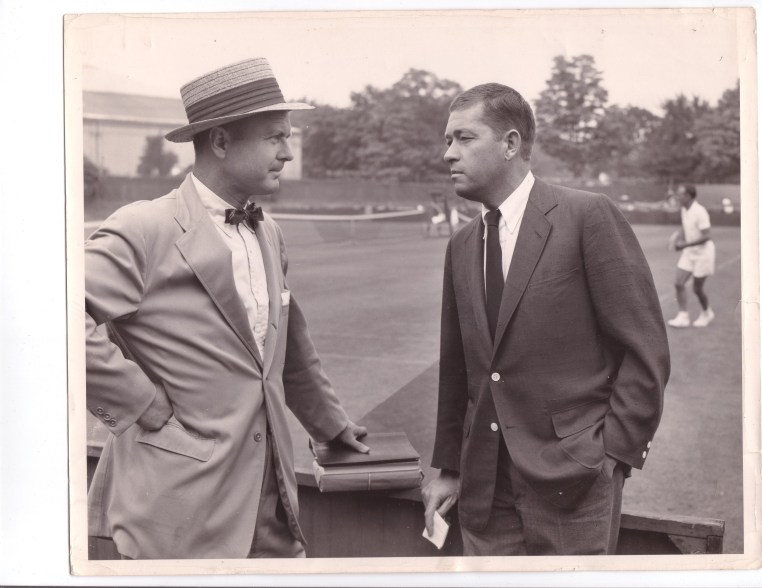

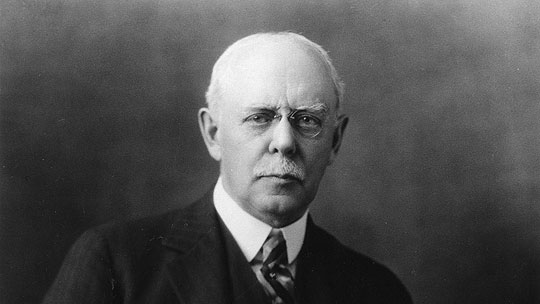
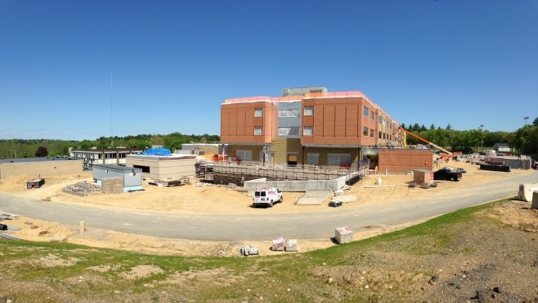
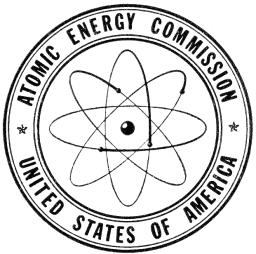
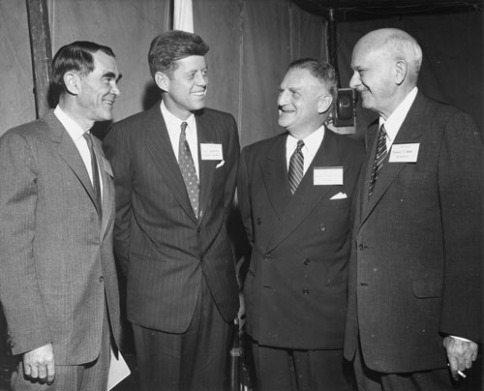
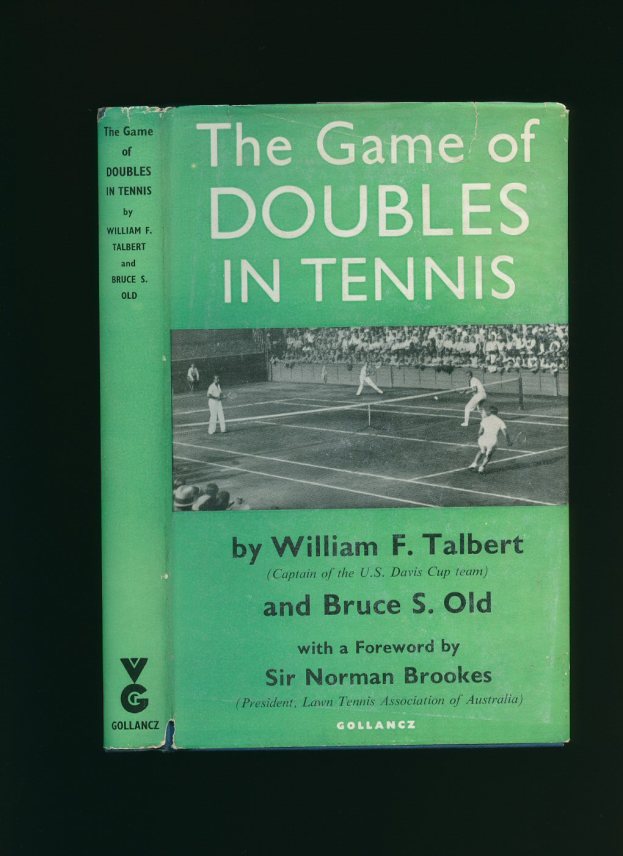
Pingback: Vero Beach City Councilor Randy Old’s Father Would be Dissapointed | Vero Communiqué